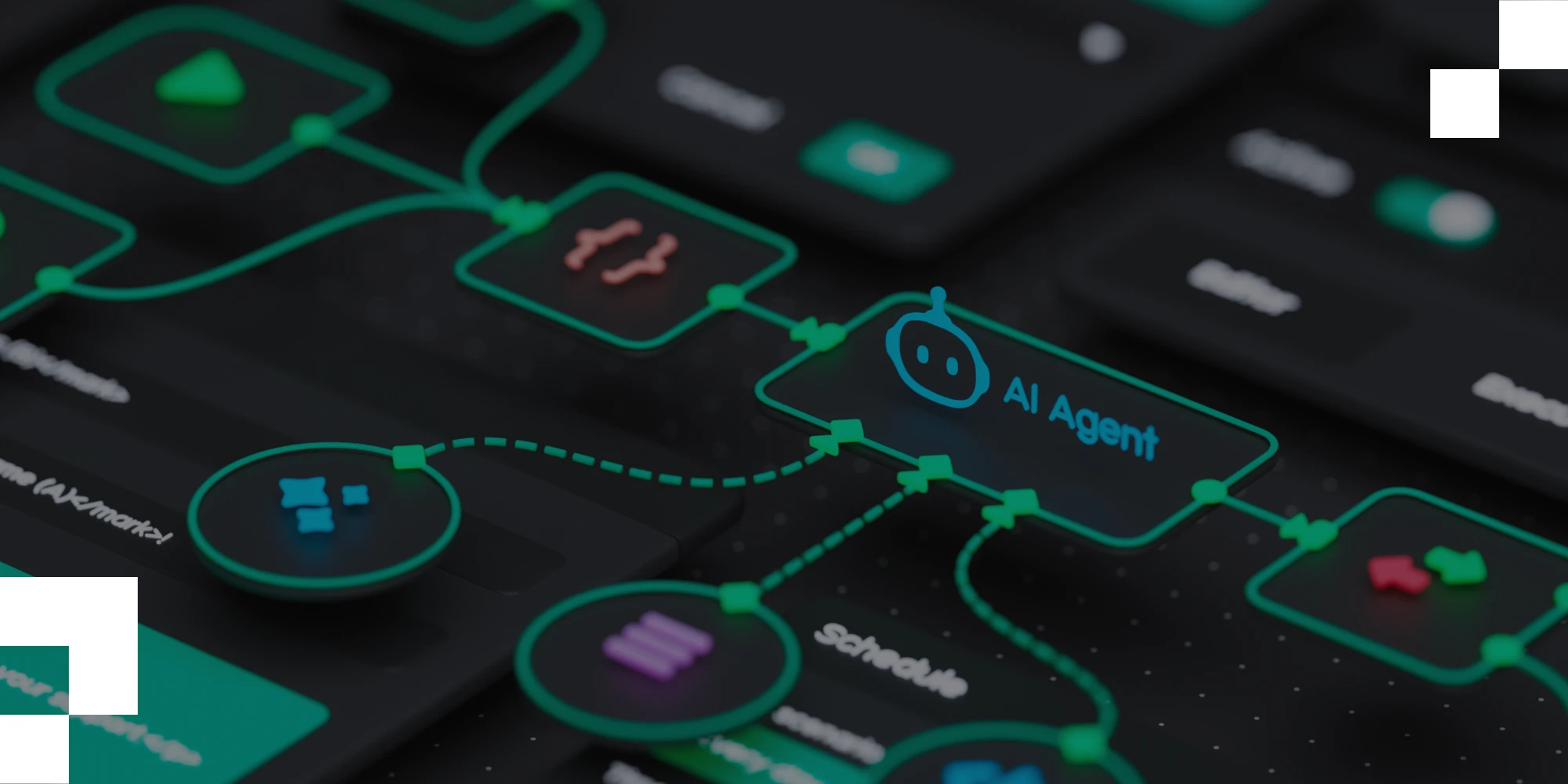Rok 2025 stanowi punkt zwrotny dla technologii no-code AI
Od niszowego narzędzia dla entuzjastów przekształca się ona w strategiczny filar transformacji cyfrowej w przedsiębiorstwach. Rynek, którego wartość prognozuje się na 187 mld USD, napędzany jest potrzebą szybkiego wdrażania innowacji oraz demokratyzacją rozwoju oprogramowania.
Platformy no-code AI umożliwiają tzw. „obywatelskim deweloperom” – analitykom biznesowym, specjalistom ds. marketingu i menedżerom operacyjnym – tworzenie, trenowanie i wdrażanie zaawansowanych modeli sztucznej inteligencji bez napisania ani jednej linii kodu. Skraca to cykle rozwojowe nawet o 80% i znacząco obniża koszty w porównaniu ze standardowym programowaniem.
Ta kompleksowa analiza identyfikuje i bada wiodące platformy, klasyfikując je według głównych zastosowań i grup docelowych.
- Segment AutoML klasy enterprise: dominują DataRobot AI Cloud i H2O.ai Driverless AI – z pełnym zarządzaniem cyklem życia modeli (MLOps), zaawansowaną wyjaśnialnością (XAI) i mechanizmami ładu korporacyjnego niezbędnymi dla branż regulowanych.
- Hiperskalerzy chmurowi (Google, Microsoft, Amazon): oferują potężne rozwiązania głęboko zintegrowane z ekosystemami chmurowymi, rozliczane w modelu pay-as-you-go.
- Platformy dla MŚP i działów biznesowych: np. Akkio czy Obviously AI – intuicyjne narzędzia skoncentrowane na szybkiej analityce predykcyjnej.
- Konstruktorzy aplikacji i przepływów pracy z AI: np. Bubble, Zapier – integrujące AI z tworzeniem aplikacji webowych i automatyzacją procesów.
Kluczowym wyzwaniem pozostaje zarządzanie bezpieczeństwem, zgodnością i prywatnością danych. Wzrost liczby „obywatelskich deweloperów” zwiększa ryzyko wycieków danych lub niezgodności z regulacjami jak RODO czy nadchodzący EU AI Act. Skuteczne wdrożenie wymaga ram ładu AI (AI Governance) – klasyfikacji danych, polityk DLP, ciągłego monitorowania.
Strategiczna rekomendacja: podejście hybrydowe – wykorzystanie no-code AI do szybkiego prototypowania i automatyzacji standardowych procesów przy jednoczesnym zachowaniu tradycyjnego programowania dla systemów krytycznych pod względem wydajności. Połączenie inwestycji w właściwe narzędzia, szkolenia i odpowiedzialne upodmiotowienie pracowników pozwoli w pełni wykorzystać potencjał rewolucji no-code.
Wprowadzenie
W 2025 roku sztuczna inteligencja przestała być domeną tylko wyspecjalizowanych zespołów data science. Rewolucja no-code (tworzenie aplikacji bez kodowania) w połączeniu z AI stworzyła nową kategorię narzędzi demokratyzujących dostęp do zaawansowanych technologii.
Platformy no-code AI umożliwiają budowę, trenowanie i wdrażanie modeli ML przez użytkowników biznesowych za pomocą wizualnych interfejsów. To nie tylko przyspiesza innowacje, lecz także redefiniuje proces powstawania oprogramowania i rolę danych w podejmowaniu decyzji.
Krajobraz rynkowy i trendy 2025
Rynek no-code/low-code rośnie w rekordowym tempie – prognoza na 2025 r. to 187 mld USD (CAGR 31%). Szacunki mówią, że 70% nowych aplikacji korporacyjnych powstanie z użyciem low-code/no-code (vs 25% w 2020 r.).
Centralnym zjawiskiem jest wzrost roli „obywatelskich deweloperów” – ekspertów biznesowych budujących aplikacje bez formalnych umiejętności programowania. Do 2025 r. rola „no-code architektów” wzrośnie o 40%.
Korzyści no-code vs. tradycyjne programowanie:
- skrócenie projektów o 60–80% (np. CRM: 2–3 tyg. zamiast 8–12 tyg.),
- ROI prostych narzędzi no-code: 300–400% w 3 lata (vs 100–150% dla tradycyjnych aplikacji),
- ale tradycyjne kodowanie pozostaje niezastąpione przy systemach krytycznych i wymagających maksymalnej wydajności.
Kluczowe trendy 2025:
- integracja no-code z generatywną AI (tworzenie aplikacji komendą w języku naturalnym),
- rozwój agentów AI automatyzujących złożone procesy,
- hiperautomatyzacja (AI + RPA + process mining) jako strategia enterprise.
Kategorie platform no-code AI
- Enterprise AutoML i zaawansowana analityka predykcyjna – DataRobot, H2O.ai, Dataiku.
- Platformy hiperskalerów (Google, Microsoft, Amazon) – głęboka integracja z chmurą, skalowalność, model usage-based.
- Platformy dla MŚP i działów biznesowych – szybkie wdrożenia (Akkio, Obviously AI, Graphite Note).
- Konstruktorzy aplikacji/workflow – Bubble, Zapier, n8n, Levity.
- Open-source i self-hosted – H2O Open Source, MLflow, Airflow (maksymalna elastyczność, wymaga większych kompetencji).
Analiza porównawcza – główne wymiary
- Funkcjonalność: enterprise (pełen cykl MLOps, XAI), SME (intuicyjność i szybkość).
- Algorytmy: DataRobot/H2O – szerokie biblioteki; hiperskalerzy – AutoML + modele foundation; SME – predykcja i NLP.
- Wdrożenia: od SaaS po hybrydowe i edge.
- UX: citizen developers – interfejsy wizualne, natural language; enterprise – zbalansowane GUI + opcja kodu.
- Ceny: subskrypcje dla SME (50–500 USD/miesiąc), usage-based dla chmury, licencje enterprise sześciocyfrowe.
Bezpieczeństwo i zgodność
- Enterprise: pełne ramy compliance (GDPR, HIPAA, EU AI Act).
- Open-source: wymaga własnych implementacji auditów i bezpieczeństwa.
- Ryzyka AI: bias, ataki adversarial, wycieki danych → potrzeba XAI, audytów i DLP.
Strategie wdrożeń i rekomendacje
- Ocena gotowości organizacyjnej – infrastruktura, kompetencje, kultura innowacji.
- AI Governance – jasne zasady użycia danych, monitoringu modeli, procesów zatwierdzania.
- Hybrydowe podejście – no-code do prototypów i powtarzalnych procesów + kod tradycyjny do systemów krytycznych.
- Pilotaże niskiego ryzyka – szybkie POC -> skalowanie.
- Portfel narzędzi zamiast jednej platformy – unikanie vendor lock-in.
Przyszłość i wnioski
Rewolucja no-code AI demokratyzuje dostęp do SI i przyspiesza innowacje. Największym wyzwaniem i kluczem do sukcesu jest połączenie technologii z ramami governance i kulturą organizacyjną.
- Enterprise: DataRobot, H2O.ai, Dataiku (pełne cykle, governance).
- MŚP i działy biznesowe: Akkio, Obviously AI – prostota i szybki zwrot.
- Hiperskalerzy: Google Vertex AI, Azure AI, SageMaker Canvas – skalowalność i integracja w ekosystemie chmury.
Przyszłość to modele hybrydowe – łączenie szybkości no-code z mocą tradycyjnego kodu. Firmy, które skutecznie zrównoważą demokratyzację AI z kontrolą i bezpieczeństwem, będą liderami ery gospodarki opartej na danych.
Czy chcesz, żebym przygotował z tego skrócone streszczenie w formie tabeli porównawczej (platforma / zalety / ograniczenia / dla kogo / model cenowy), które możesz łatwo wykorzystać w prezentacji?




